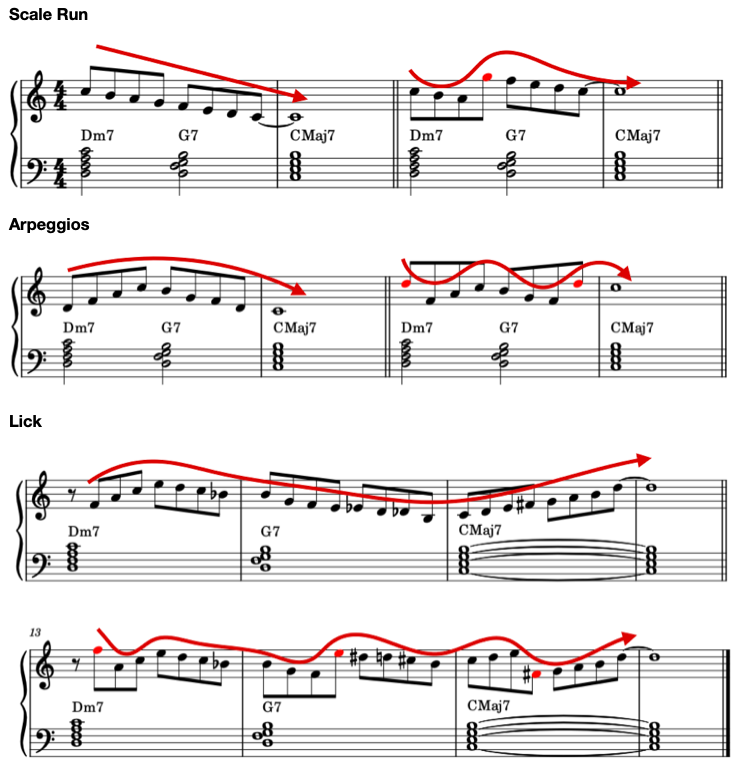Linear Improvisation & Melodic Contour
When improvising, most of us tend to play quite linearly. We start on a note and move up and down quite smoothly, using either scales or arpeggios. This is perfectly fine, but eventually it begins to sound a bit boring, a bit too smooth, and a bit unimaginative. Another way of saying this is that your melodic contour is too smooth. Melodic Contour is simply the general shape of your improvised line.
To make our solo more interesting we want to insert a few bigger jumps in-between our smooth lines to create a bit more interest and contrast. This means we want to introduce some jaggedness into our melodic contour.
Octave Displacement
A simple way of doing this is with octave displacement. All this involves is shifting a note in a linear phrase up or down by an octave and continuing the phrase in that new octave. So we are literally displacing a note by an octave.
Below are a few examples using a scale run, arpeggios, and a lick. The red arrows show the melodic contour. The red notes show notes that have been displaced by an octave (up or down).

So we are playing the exact same notes, we have just moved part of the phrase to a different octave. All the techniques we have covered in previous lessons can still be used – we can still target guide tones or use side slipping, just in a new octave. And because we have introduced a leap into our otherwise smooth phrases, the melodic contour is much more jagged and interesting.
Note: when we use octave displacement over an arpeggio, some people also call this a pivot arpeggio.
This technique works best when the displaced note is on an off-beat and when you displace in the opposite direction of the line (i.e. displace up if the phrase is descending). Of course, you don’t have do follow these rules, but this technique tends to sound better when you do.